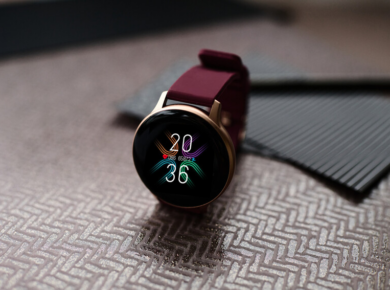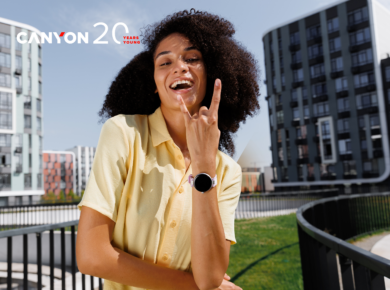Parents always prioritize their children’s safety. The modern world presents many dangers for kids. They are especially relevant in large, overcrowded cities with constant construction work, heavy traffic, and high crime rates.
At the same time, parents cannot be with their children 24/7. They must manage countless daily responsibilities, such as work, grocery shopping, and hundreds of annoying errands. As a result, they are kept away from their children for long periods.
Luckily, modern technology provides effective tools to help parents keep an eye on their kids, even in difficult situations. A wide range of electronic devices is now available, offering remote monitoring, danger alerts, and even two-way communication. This article explores different types of tracking devices for kids, breaking down their pros and cons in various real-life scenarios.
6 Popular Types of Trackers for Infants, Toddlers, Preschool Kids, and Teenagers
At every age, children have unique needs, varying levels of activity, and different experiences interacting with the world around them. It’s only natural that there is no one-size-fits-all child locator. As kids grow and become more independent, you’ll need to adjust and upgrade their tracking devices to match their changing needs.
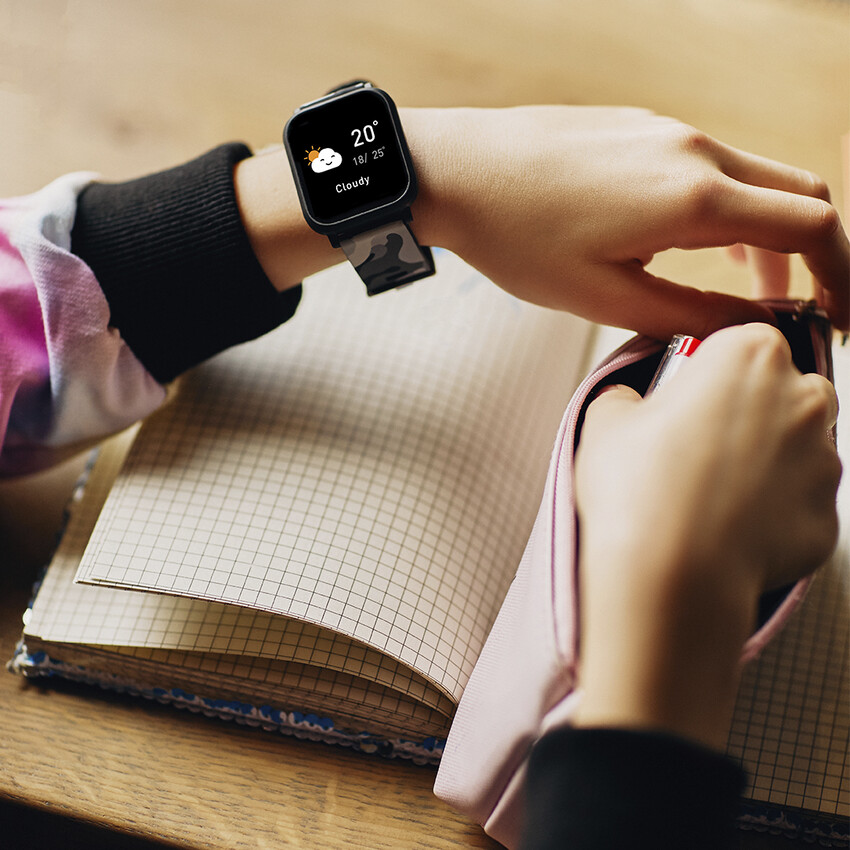
1. GPS Tag Tracker
A simple, compact, and easy-to-use device that resembles a basic keychain with a minimalist design — though some models feature printed patterns, engravings, or stickers. It easily attaches to clothing, shoes, or various child accessories.
GPS tags can be divided in two main types. Gadgets of the first type come with rechargeable batteries. They provide 1 to 2 days of active usage before recharging and offer frequent location updates and a strong signal. However, you need to plug them in a few times a week. Devices of the second type run on disposable batteries. They are capable of operating for weeks or even months uninterrupted. However, their energy efficiency comes with a cost — rare data transmissions and unstable connection in unsatisfactory conditions.
Pros of GPS tag trackers:
- Invisible monitoring — a child may not even be aware of tracking.
- Extended battery life — generally longer than more complex devices.
- Small size and secure attachment — harder to forget at home.
- Hybrid transmitters in some models can function indoors.
Cons of GPS tag tracker:
- Easy to lose if detached due to the small size.
- Limited functionality — location tracking only.
- Noticeable data transmission delays in disposable battery models.
Overall, a tag tracker is a great GPS tracking device for infants young for smartwatches, smartphones, or other advanced gadgets. It is also budget-friendly and allows parents to use multiple devices at once. They can attach them to clothing, strollers, or baby accessories.
2. RFID and Bluetooth Tag Trackers
These devices are similar to those in the previous category. Their key distinction is alternative wireless communication standards. The standard operating range of Bluetooth and RFID transmitters is 50 to 150 meters, depending on the model. They won’t let you track a child’s location across the neighborhood. Such trackers come in handy in malls, assessing the direction and distance to your child’s location. In case of a connection drop, they will send an alert message to your device.
Pros of short-range trackers:
- Built simply, priced affordably.
- Longer battery life compared to GPS models.
- Stronger signal reception indoors, even in areas with strong electromagnetic interference.
Cons of short-range trackers:
- Only useful when you’re physically nearby — kids can’t be left unsupervised.
- Some security systems can block RFID signals.
- Tag trackers are tag trackers — they are basic devices with minimal functionality.
Bluetooth and RFID trackers provide a great answer to the question of how to find your child in crowded areas. They are an ideal choice for toddlers who are highly active but still stay close to their parents most of the time.
3. GPS Smartwatches
Small stylish accessories with satellite tracking modules. GPS watches for kids are often viewed as a first gadget introducing children to the world of digital communications. Advanced models often have different features and support for third-party apps — from calculators and calendars to games, calorie counters, and fitness assistants.
The typical battery lifetime of GPS watches for kids is between 18 hours and 2–3 days. Therefore, children will need to develop certain discipline before using them. However, most kids love wearing these devices, as the latter come in various designs with colorful prints.
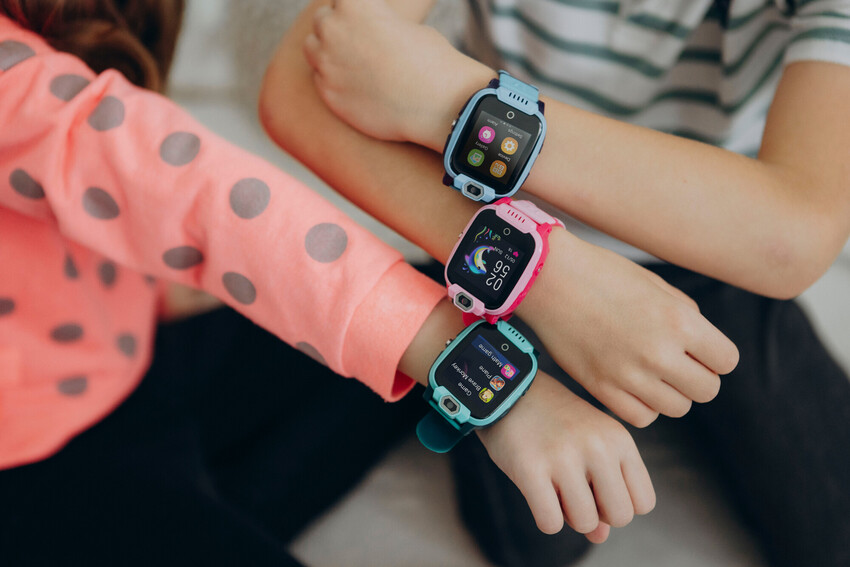
Pros of GPS smartwatches:
- Many models come with multi-functional parental apps.
- Most modern versions support geofencing and send alerts when a child leaves a designated safe zone.
- The upside of high energy consumption is real-time data transmission with minimal delays
- Additional features and apps encourage kids to wear the watch throughout the day without taking it off.
- Some models come with multi-level safety features, such as an SOS button, fall detection, removal alerts, and even heart rate monitoring to detect sudden spikes.
- Most kids’ GPS smartwatches are built to be highly durable, with shockproof and waterproof designs.
Cons of GPS smartwatches:
- Kids can resent constant monitoring. Explain why tracking is necessary and set clear personal boundaries.
- Limited battery life. When using multiple apps, the battery may drain before the day ends.
- Many smartwatches require a monthly subscription, though they can offer premium services like dispatcher communication and automatic emergency calls.
If you are in search of a simple child safety tracker, think of a GPS smartwatch. They’re suitable for children aged 5–9 years who are starting to go to the playground, visit friends, or run small errands independently. Geofencing provides peace of mind for parents. They do not need to check the phone all the time, as it alerts them if the child walks outside the safe zone.
4. Cell Service Smartwatches
These are mini-smartphones with wrist straps. These devices have SIM card support for connecting to cell towers. This gives them an advantage in areas where GPS signals are blocked by tall buildings, dense vegetation, cliffs, or other major obstacles. The triangulation tech solution allows pinpointing a child’s location with an accuracy of 50-500 m.
Most importantly, instead of wondering how to find your child, you can get information directly from them. Just call or text the number linked to the SIM card. This provides an easy way to stay in touch without relying on expensive smartphones, which kids frequently lose or break during active play.
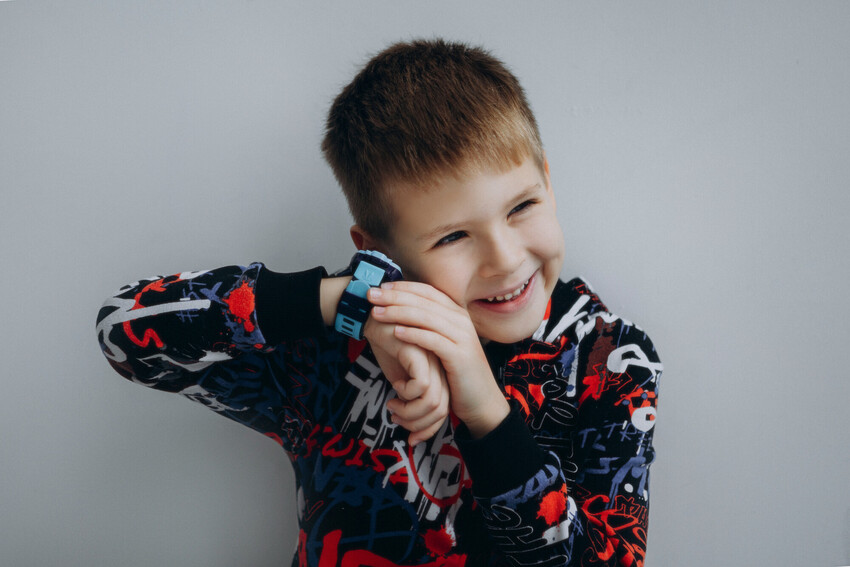
Pros of cell service smartwatches:
- Two-way communication support — you can call or message your child anytime.
- Safe contact list feature — allows calls only from approved numbers.
- Many models can transmit extended telemetry data, including photos and videos of the child’s surroundings.
- Unlike a smartphone, a watch is much harder to lose or leave behind.
Cons of cell service smartwatches:
- An additional SIM card means an extra mobile plan and extra costs.
- Smartwatches have lower call quality compared to regular phones.
- The more features, the shorter the battery life — most last around 20 hours per charge.
A cell service smartwatch can be the perfect tracker for a teenager or preteen kid. It still provides parents with extensive monitoring features while giving kids more freedom and independence. The ability to communicate directly allows parents to ask questions first and only verify information when necessary.
5. Smartphones with Tracking Apps
The most versatile solution to find your child and monitor elderly relatives or individuals with limited mobility. Another benefit is the ability to control device usage. Parental tracking apps show who the user has contacted, time spent on social media sites, and what paid subscriptions have been activated.

Pros of smartphones with parental tracking apps:
- If your child already has a smartphone, you don’t need a separate tracking device.
- A smartphone is a truly useful gadget that supports communication, education, and even early work opportunities.
- Phones offer high call quality and a wide selection of messenger apps.
- Parents can monitor their children’s location and online activity.
Cons of smartphones with parental tracking apps:
- The many features of a smartphone can distract children from studying.
- Phones are easier to lose, break, or get stolen.
- Heavy smartphone usage can drain the battery within just a few hours.
Smartphones are ideal tracking devices for teens as they require a certain level of responsibility and discipline. At the same time, they provide parents with additional peace of mind. In a critical situation, you can locate your daughter’s phone or son’s gadget by contacting law enforcement. They can request location data from the mobile provider, giving access to movement history.
6. Embedded wearable trackers
New technology that has gained popularity thanks to the development of electronics. Trackers are embedded into shoes, clothing, hats, or glasses, making them completely unnoticed. They allow parents to monitor their child discreetly — no resentment or discomfort. Another feature is the ability to collect biometric data related to sports training, stress levels, and overall health.
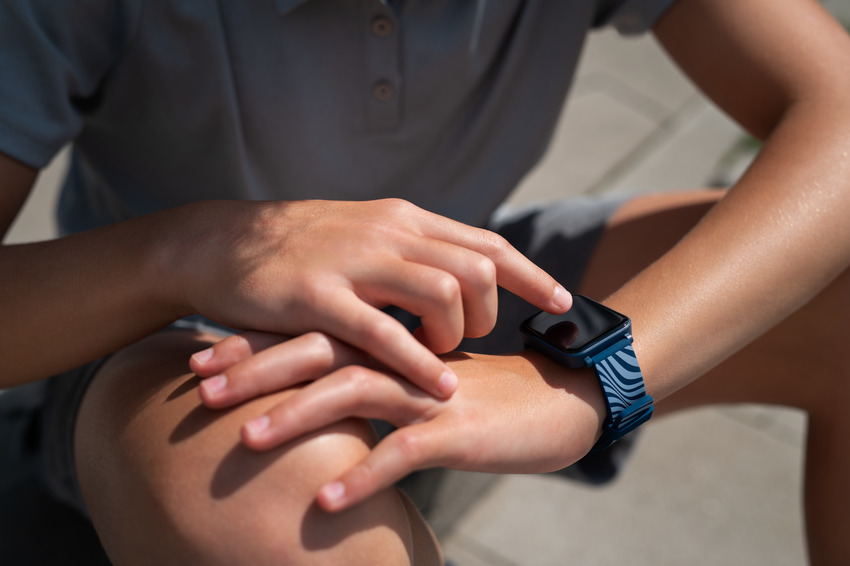
Pros of embedded wearable trackers:
- Minimal risk of theft, loss, or damage.
- No discomfort for the child — they won’t have to explain to peers why they’re wearing a specific gadget.
- Long battery life. You can find experimental models that charge from solar energy or even body heat.
Cons of embedded wearable trackers:
- It is still an emerging technology with many limitations and a low adoption rate.
- Limited functionality — similar to basic tag trackers.
- Buying entire wardrobes with built-in trackers can be too expensive for most parents.
Embedded wearable trackers can be a useful safety feature for people of all ages, from infants to adults and seniors. However, it’s important to consider the experimental nature of this technology — for now, you can’t be 100% certain of its effectiveness.
Conclusion
There are various security solutions for kids and their parents. Each has specific use cases, pros, and cons. GPS tag trackers are the best option for infants, while RFID trackers work well for toddlers. Younger school-age children may benefit from basic GPS smartwatches, while older kids can transition to cell service watches. Smartphones with tracking apps are the most practical choice for teens and anyone who requires supervision.
However, every situation is unique. When choosing a tracker, account for the child’s activity level, health conditions, and the safety of their environment.



